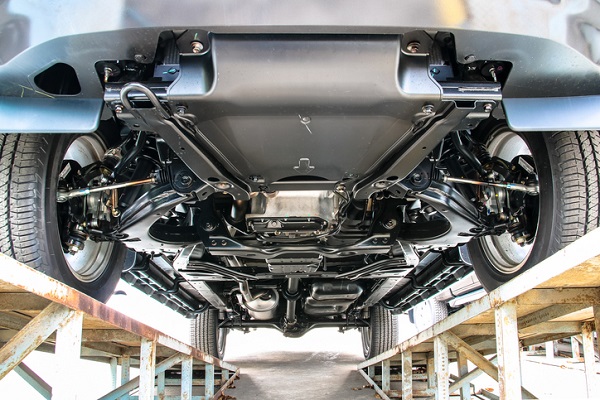
Air suspension systems are a relatively new and innovative addition to vehicles. They offer exciting prospective changes to the way a vehicle operates in a variety of terrains, but as with most things, there are also certain drawbacks.
Here is a helpful guide to air suspension systems for auto technicians in training.
How Air Suspension Systems Work
Prior to the introduction of air suspension, many vehicles had—and still have—traditional struts, or shocks, which are dampening mechanisms that help the vehicle absorb bumps and uneven surfaces in the road such as potholes and off-road terrain. Typical struts involve metal springs, which are coils that absorb energy and pushes it back out, allowing the car to respond better to different driving environments.
Air suspension is different because it replaces the metal springs with rubberized packs of air. There are different varieties of air suspension styles. However, the most popular is one known as a convoluted or double convoluted air spring. This type is used the most, specifically because it has better endurance, wears down less easily, and provides a reduced distance between the axle of the car and the frame, which means there is more space for the shocks if the car is driving on a difficult terrain.
Pros With Automotive Worker Training Know the Benefits of Air Suspension Use
The addition of an air suspension system has a variety of performance benefits. One of the most important advantages it has over traditional struts is that it gives the car an adjustable ride height. This means that if a vehicle is carrying a heavy load, its underside is not as close to the road as it would be on struts, because when the air springs compress with weight, the system responds by increasing air pressure, keeping the vehicle balanced.

The greater allowance for ground clearance also makes air suspension systems better for off-road use. Drivers can rely upon the adjustable height to provide a smoother ride and improved handling, especially on rough terrain, as well as reduce risk of damage to the chassis or underside. As anyone involved in auto technician training knows, a suspension system is in place mainly to build upon the traction provided by tires to respond to the driver’s steering and driving needs, and a good system should prolong the quality of the vehicle. Air suspension helps reduce impact on the car body, and also helps the vehicle sustain an aerodynamic targeted ride height, which reduces drag as well as fuel use.
The Negatives of Using Air Suspension Systems
A common misconception with air suspension systems is that because it involves contained air, the springs will pop with too much pressure. This is a little misguided, because they can burst if improperly installed, but are otherwise safe. Students enrolled in automotive worker training should be aware that installing an air suspension system is more complex and involves more components than traditional coil springs, so improper installation is uncommon, but possible.

Another drawback from air suspension is the cost. It is considered a luxury addition, and is expensive to install as well as maintain. Although there isn’t a chance the air bag will burst, a common problem is that if the system sustains enough damage it may start to leak, which affects the entire suspension system and requires professional evaluation.
Are you ready to go back to school and are interested in mechanic courses in Toronto?
Contact your local Automotive Training Centre for more information!

